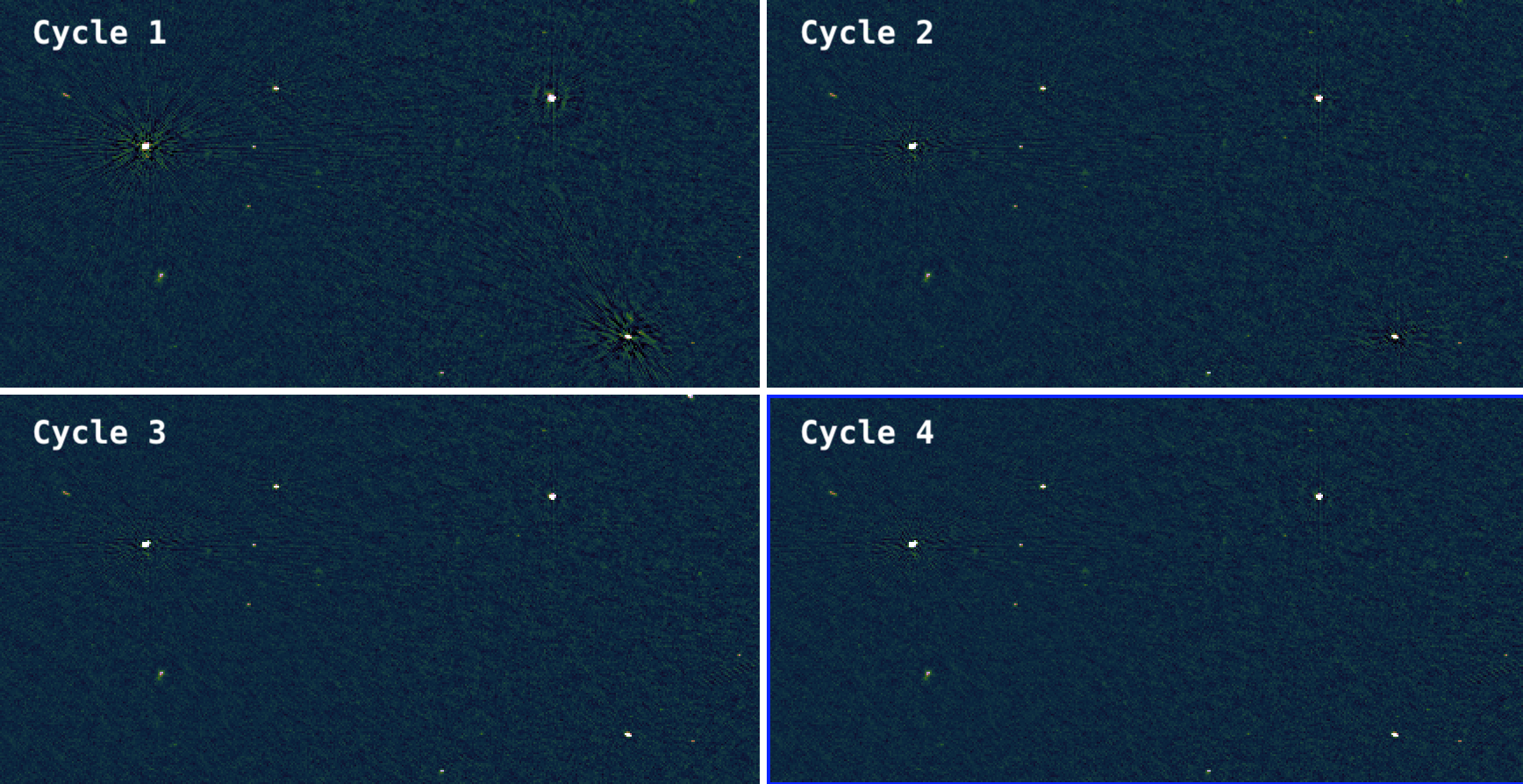Daily Image
29-08-2019Correcting for Direction-dependent Effects in LOFAR Data with Screens
| Submitter: | David Rafferty |
| Description: | Correcting for Direction-dependent Effects in LOFAR Data with Screens LOFAR data suffer from direction-dependent effects (from the ionosphere and beam) that must be solved and corrected for to achieve wide-field, thermal-noise limited images. One approach to this problem is to solve for the relevant effects towards bright sources in the field and to use these solutions to make smooth 2-D screens that are applied during imaging. We are investigating a novel strategy for this on LOFAR HBA data, where we use the DDECal solver (part of the DPPP software) to solve for rapidly varying ionospheric effects (dTEC, differential total electron content) and slowly varying beam effects (amplitude and phase) in approximately 50 directions simultaneously. Simple dTEC and gain screens are then fit through these points and used in imaging of the field using WSClean (Offringa et al. 2014) and the IDG gridder (Van der Tol, Veenboer & Offringa 2018), which allows for fast imaging while applying screens. Shown above is a sequence of images for a small region of the field obtained from four cycles of self-calibration using this strategy, showing how the images change as the model and screens improve. Testing of a similar strategy is being developed for LBA data at this week’s LBA Calibration Busy Week, where the use of screens is expected to be especially important, due to the lower sensitivity that results in fewer suitable direction-dependent calibrators (and hence greater need for interpolation of the corrections between the calibrator positions). This is one of the first and very promising results from a now fully functional pipeline that enables automated high-quality thermal-noise limited images by applying screens. |
| Copyright: | CC-by-SA |
| Tweet |  |
